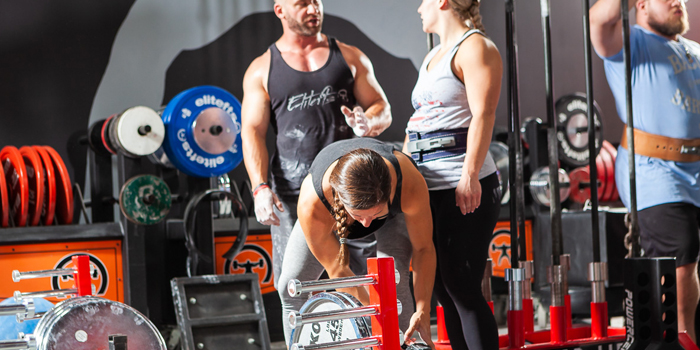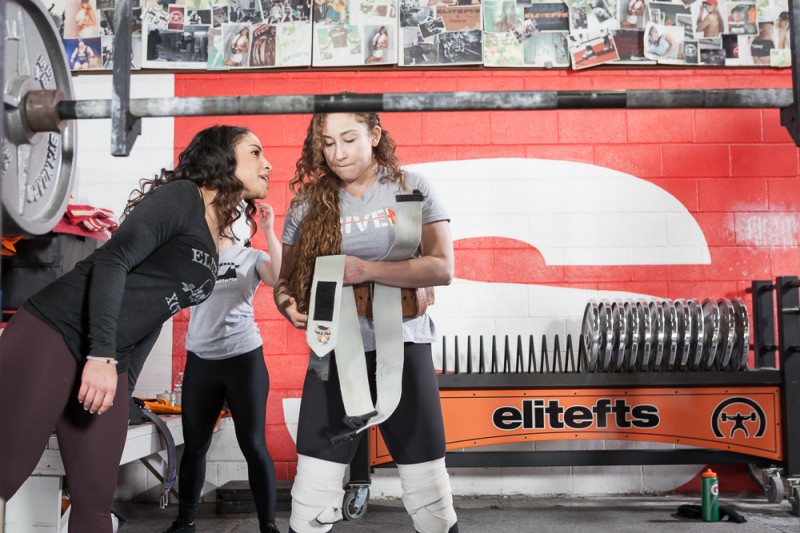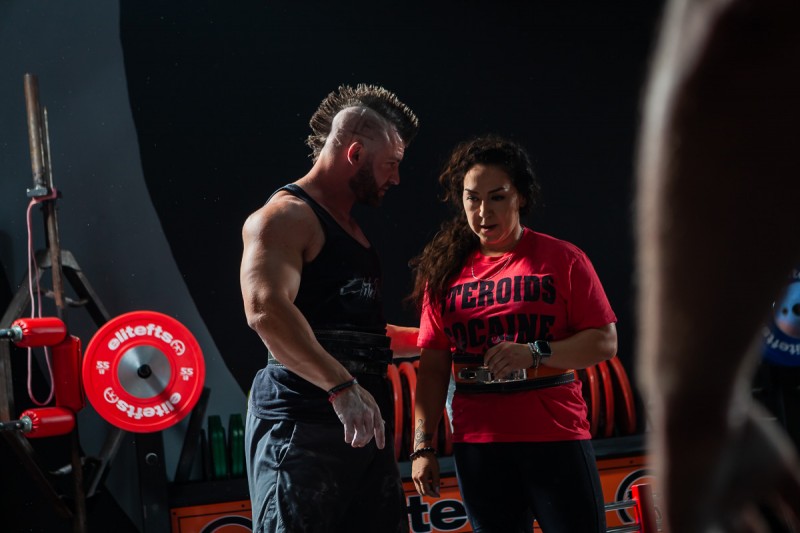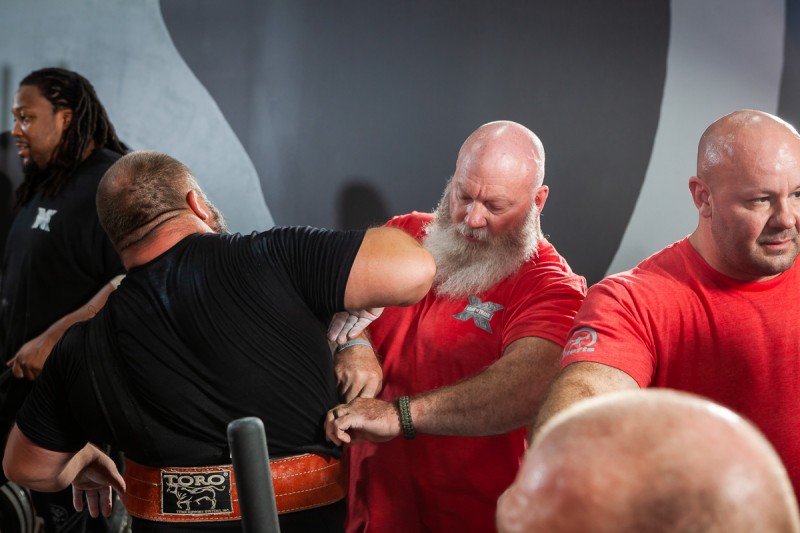
A long time ago, in a land far, far away…well actually, to be a little more precise, about 35 years younger and about 70 pounds lighter ago…I was a student in high school and a member of the varsity track relay team.
As a track athlete, specifically a sprinter, I recall quite vividly a conversation with our sprint coach one day after track practice. Our coach, Cleothus Hudson, was an art teacher at the high school. But of far more importance to us as members of the relay team was that Coach Hudson had been an alternate in the Olympics in the 110-meter hurdles. Quite the resume, and now post-track career and settled into a life as an educator; he still looked very much the part. Tall, ‘cut’ and with those Olympic sprinter muscles filling out his shirt sleeves. Built a little like a young Hershal Walker but with the most perfectly manicured afro and in vogue clothes. He was always stylish and meticulously pressed.
In every practice, Coach Hudson was seen with his whistle around his neck and a green apple in his hand. He ate an apple during practice each day while coaching track. We all secretly aspired to be as fast, talented, and as put together as he was. Lofty aspirations for the four of us on the relay team, inspired by a coach more than worthy of our collective admiration and respect.
RECENT: If It Makes You Strong(er), It Makes You Strong(er)
Coach Hudson was a soft-spoken coach with a southern accent, self-assured presence and gravitas, yet who had a velvet delivery to his instruction with a vernacular and colloquialisms that perfectly displayed his southern upbringing. For those bodybuilder historians out there, he had that Lee Haney-Esque southern drawl that added to the mystique of his impressive build and the type of swagger that only someone who sprinted against the likes of Renaldo Nehemiah could possess. Far too cool, experienced, and valuable to be working with a group of high school sprinters. Having him as our sprint coach was sheer good luck on our parts. The turnover for high school students is a constant and a student’s varsity years in high school athletics are finite and fleeting. That said, Coach Hudson invested in us, he had a belief in us for those two years, and that belief was palpable. An amazing feeling and privilege bestowed onto us, still forming young people, from a man with such a revered athletic past.
Coach Hudson let the four of us know one day after the conclusion of a practice that we would be working with the long jump coach for a while starting the next day. He discussed how good sprinters could become good long jumpers and explained how more individual wins in a track meet equates to more total points. The goal being for the team to win as a whole vs. mere individual wins in individual races.

So the following day, the four of us did our warm-up drills, worked on our start out of the blocks, and baton exchanges all with Coach Hudson, then he handed us off to the long jump coach. He pointed while palming his green apple over to the long jump area located near the 300-meter mark of the track back in the grassy area—a familiar area beyond that curve of the track where the third leg of the 4x100 meter would hand off to the fourth leg of the team. There we found a long narrow runway that ended abruptly at the mouth of a long and deep pit of perfectly flat, smoothed out, and slightly damp sand.
Now gathered around the long jump pit, the long jump coach explained to the four of us that we were to run fast, basically sprint as fast as we can down that runway. He instructed us that we were to sprint hard all the way to a white board that was built flush into the runway. The board was located at the end of the runway and just a few feet before the sandpit. Once reaching that board, we were to leap as far as we could, up and out from that white wooden board, and land as far into the sandpit as possible. It seemed pretty simple; run fast, hit the board on the runway, leap, and land.
One by one, the four of us ran down the runway as fast as we could. When we reached the board, we jumped from it, leaping as far as we could, and landed into the pristinely raked sand in the pit. After each of the four of us jumped, the coach would take out this huge tape measure and measure from the end of the white runway board to the closest point of the disturbed sand in the long jump pit. There were a couple of 17-and-a-half foot attempts, several 18-and-a-half foot attempts, and one 19-footer as well. I distinctly recall how pleased the coach was. But as fans of Carl Lewis, who then was the Olympic long jump king and now a long jump legend, we thought those seemed like meager jumps at best. After all, Carl Lewis would leap and bicycle his legs while high up in the air, landing some 27 feet into the pit. Turns out that our jumps in the context of high school jumpers were solid leaps for a handful of first leaps. So we were excited, but mostly we were excited to go back and tell Coach Hudson.
Over and over that day, we all ran as fast as we could and hurled ourselves into the sandpit. The long jump coach who was working with us took measurement after measurement, and at the end of the practice, we had long jumped quite a few times, which was allowing him the time to note our technique or lack thereof.
With that day’s practice now over, the long jump coach then spoke with us as we all sat nearby, shaking the sand from inside our shoes, socks, and track shorts. He stated that he would teach us how to long jump properly and stated how his exemplary instruction and years of expert teaching would immediately result in a long jump averaging about two feet less of a jump for all of us. We laughed at his joke but immediately felt a little awkward when he didn’t laugh back. Looking at one another, we asked if he meant to say that with his exemplary instruction and years of expert teaching, that he would “add” two feet to our average jump. He responded seriously, “No, I mean exactly and precisely what I said. You will absolutely lose two feet as I am changing how you jump, and that will initially have a negative impact on how far you jump. Years as a long jump coach tell me this.” He continued, “That said, once you become accustomed to these changes, accustomed via jump after jump after jump coupled with the proper technique, religious-like consistency, and hard work, you will then add many additional feet to your current jump.”
His words could not have been more prophetic, as the more we worked with him over the next few days and weeks, the worse our jumps got, and the shorter the distance became. Our initial 17-and-a-half through 19-foot jumps turned into confounding and ever frustrating 16-foot jumps. Of course, that is when we were not completely overrunning the board, fouling, missing the board altogether, or having to stutter step to try and hit the board after losing speed and momentum in the process. This was a confounding process as we were literally re-learning how to properly do what we all initially felt was instinctual and second nature.
As time passed, our long jumps continued to get worse and worse. They got so bad and discouraging that the four of us talked after practice in the locker room about chucking the whole thing. Chucking the whole long jump practice. Basically, the plan was going to the meets to run, jump, and blow off all these new aspects to the jump. If we do that, we are sure to hit those original numbers and thus score more total points for the team in addition to all the relay points. After all, that was the point of this whole long jump thing, right? More points, right?
We greatly respected Coach Hudson, so we shared our plan with him. He listened intently to everything we said. Coach Hudson was the type of coach that would listen, truly listen; not listen waiting to then pounce in with an answer he had ready and waiting, but attentively listen to not only what we said, but how we said it. He'd consider where we were in the thinking process and where we as young people and individuals were in our journey as aspiring athletes.
After hearing all we said, Coach Hudson let some silent time pass, making sure we had said all that we felt needed to be said. After a long break in the conversation, he then spoke. He spoke at length that day and that conversation took up the entirety of our practice. As he knew from his own personal experience working with coaches on the US Olympic team, practice involves more than just the physical aspects of training, but the understanding of why we do certain things in training. That in order to excel in something, one must first believe in that something as conveyed by someone who believed in them. He knew that there was and is a world of difference between taking a leap of faith and having faith. Faith knowing the person saying to take the leap had made that leap themselves, succeeded in that leap, and that they also believe in your ability to make that same leap.
At the end of the day, Coach Hudson encouraged us to fight that urge to go the easy route but to stick with the more difficult path. “If it were easy,” he stated, “everyone would be a great long jumper.” But more importantly, know that sometimes things come easy to those who might be a little more talented. Yet it is the athlete who works harder and stays the course that often becomes the victor even over the more talented athlete.” Finally, he added that when talent and hard work are combined, that is what makes a very formidable athlete.

Coach Hudson had a way of packing a huge lesson into small little sound bites. Each sound bite was espoused as he took bites from his green apple.
After talking with Coach Hudson, the four of us absolutely committed to learning the correct, albeit frustrating proper long jump technique. For us, it wasn’t so much about understanding that technique was the key, that things take time, or that practice makes perfect. Those aspects, all which are individually true, were lost on four 17-18-year-olds. For us, what was true was that our coach, our own personal track hero believed in us. So we did the right thing for our long jumps, not because we suddenly understood what it took to become better jumpers, but because we believed in the words of the man who believed in the four of us. Said another way, the lesson Coach Hudson was teaching was absolute in its truth and steeped in the experience and lessons learned of an Olympian. But what was the selling point for us was that the information was coming from someone who truly felt we accomplish this task.
Outstanding lessons from highly trained and experienced coaches, regardless of the truth and value of the lesson or educational prowess of the coach and teacher, are often lost on their athlete. Lost as lessons without a belief in that coach, that mentor, that teacher are, to an extent, hollow. Those lessons, even from the most experienced coaches, will only be followed up to a point, and that point is typically when the road gets rough. The athlete feels like reverting to something that seems to have worked better than this new thing, be it a new technique, a new program, a new training cycle, etc. We didn’t follow through with Coach Hudson’s instructions merely because he was an Olympian; we followed through because he was an Olympian who believed in us, and we then trusted him completely.
Our collective long jump was just shy of 20 feet by season's end, with one jump over 22 feet. I would love to say the 22 footer was mine, but alas, that is not the case.
Now some three decades later, since my experiences with Coach Hudson, I find myself having powerlifted since 1989, and I have been an assistant principal in a high school since the 1990s. That is a good chunk of time working with powerlifters, with students, parents, staff members, and community members. The story of Coach Hudson serves to illustrate one of the truths that has stood the test of time with regard to working with strength athletes, powerlifters, students, and people in general. That truth is stated best in a quote by Theodore Roosevelt. That quote is this, “People don't care how much you know until they know how much you care.” The four of us young people in the Coach Hudson story did not believe in the long jump methods being taught as the results proved counterintuitive to the lesson. But, because there was a belief in the coach, the lessons were adhered to until that time when the lessons began to manifest, eventually leading to our exponential success as jumps in addition to sprinters.
Roosevelt’s quote and lessons of the Coach Hudson’s of the world hold true regardless of age, skill level, athletic prowess, experience, years in the sport, and prior success. They hold true regardless of these or any other variables. They hold true because regardless of variables, the constants involved is that all of humanity individually yet universally falls in place somewhere under Maslow’s Hierarchy of Needs. More on Maslow in a moment.
The question often arises from fledgling coaches is, “Does this mean that as a coach, you need to have a soft-spoken demeanor or a Mr. Roger’s or an affect like a Coach Hudson?” The answer to this question is clearly no, as countless numbers of amazingly successful coaches come in all forms of demeanor. Jackie Joyner Kersee, one of the greatest American Olympians ever, was coached by her husband, Bob Kersee. Bob was brutally honest with her, and he was hardly a soft-spoken person, often doing more shouting than talking while coaching her, Florence Griffith Joyner, and other Olympic female greats. But as her coach, he put her future success as his number one mission in life. Jackie Joyner Kersee knew that as her coach, Bob Kersee was all in, that he believed in her ability, and it was his passion, his drive, and his relentless focus on her success that was the compelling factor to stay his course when she was unsure of his methodology. As the holder of the title, Greatest Woman Athlete of All Time by Sports Illustrated, the combination of her monumental and herculean efforts combined with listening to, following, and sticking with his training program and all aspects of his coaching was the winning combination.
Coaches, teachers, and mentors all come in all different types with all different personalities and styles: the Phil Jackson, Cus D'Amato, Vince Lombardi, Pat Summitt, Ernie Frantz, Louie Simmons, Dave Tate, or the Ed Coan type of coaching style. Whomever and whatever the coach's style, the athlete, the pupil, and the student needs to believe in their coach, especially when they might not even be able to believe in themselves. Rookie coaches, much like fresh out of college teachers are often of the belief that being hard on the pupil is the way to hammer in the point of the lesson. These coaches are easy to spot as they focus on themselves and how they come across to their clients/students. Unless they evolve, these coaches will continue to miss the point that it is about truly believing in your pupil/athlete/mentee first, having them pick up on this belief, then delivering content be that technique, program, etc. through their own unique style and presentation. Coaching is never about the coach; it is always about those being coached.
Great coaches bring the best out of their athletes because of their symbiotic relationship, coupled with an absolute belief in their athlete. This is the reason why the teacher is as important as the lesson; the coach is as important as the plan. One without the other is a half-empty vessel, merely a how-to book, or an instructional Youtube video. If it were just about the lesson, then every athlete would be great after reading a helpful pamphlet on the topic.
As a side note, I submit to you that the term coach is tossed around incorrectly and frivolously. The word coach has, over the years, lost the weightiness it once deserved. The word coach is currently used by anyone who spent $500, read a book, passed an exam, and now has a sheet of paper with the words “certified trainer” on it. A certified trainer and a coach are very much not the same thing, but that is a story for another time…
Regardless of the depth of experience you have, the technical prowess you possess, your years or decades in the sport, the volume of books you have read, or the sheer number of clients you have worked with, if your client doesn’t first believe that you believe in them, then the potential of that lifter under your care has been compromised before their journey has even begun.
Coaching, as with so many aspects of humanity, starts with Maslow’s hierarchy of needs. Without those essential needs, those foundational pieces firmly in place, the athlete never sticks with or fully commits to the plan when the plan inevitably gets tough. Maslow’s motivational theory is still touted to this day as the structured approach to becoming self-actualized.
I submit that for the athlete to achieve their greatest success, their fullest potential, they are absolutely dependent in some way, shape, or form on their exposure to someone who knows more than they do about their sport. But, the knowledge hosted in that other person will always fall short when shared. It will merely be a suggestion until the coach first reaches their athlete as a person, discovering where they are within Maslow’s hierarchy, and becoming that coach the athlete believes in—as the coach in return believes in the athlete.
Without fulfilling those essential basic needs as adapted for this relationship, the athlete never gets to that all so critical point where effort, technique, consistency, intensity, work ethic, athleticism, and belief in their coach intersect. It is at that ever so crucial intersection of the athlete’s ability, when steeped in a foundation of believing in the coach, that makes all the difference in the world.

What new-to-the-sport lifters fail to recognize due to their lack of experience is not just sometimes, but most times, it takes making one step backward to take two giant leaps forward. Sometimes, for instance, it takes changing one's poor squat form, where they can easily squat 500 pounds, and changing that form to a technically sound form that will, through time, effort, consistency, and hard work, evolve into a 700-pound squat. But that growth and strength and power comes at the expense of the lifter’s current numbers, and that is what they need to understand and get past. Knowing you can, right here and now, muscle up a 500-pound squat with a bent-over back and collapsing inward knees but never quite getting any better is often more attractive to a new lifter than committing to being a 365-pound squatter who is working on their technique—and working their way back up slowly to again be a 500-pound squatter, but now with superior technique. It is easy for the ego side of us to rule over the side of us that can see the bigger picture of strength and power two years from now. There is no “great technique powder, just add water,” just as there is no “Secret Russian Formula” to get strong, powerful, and fast in 30 days or your money back.
MORE: Pink Floyd and the True Lifters
This is an all sports occurrence and often results in the average athlete falling back to the prior poor but temporarily effective habits. They have been told, shown, demonstrated the new form, but it just won’t stick as they were having greater success before. They don’t take that sound advice from the person playing the role of a coach. When the lesson sticks is when the athlete who does not believe in the technique or the program, or who is following the steps but not yet seeing results continues to work at it as they believe in their coach and believe that in the end, this new form, technique, program will come through for them as the coach does in fact believe in them, in addition to having the background of experience. Because the athlete believes in their coach, they continue with the currently non-working plan until it does. They continue until their proverbial long jump increases those several illusive feet into the pristine pit of dampened sand.
As athletes and lifters, many of us have been fortunate to have had a Coach Hudson in our lives. Some of us have been favored to have more than one amazing coach as I reflect on my experiences with Ernie Frantz. These coaches/mentors have proven to be living illustrations of what we can be as coaches and as what our athletes, clients deserve as the pupils.
The strongman, powerlifting, or bodybuilding coach must essentially develop the gravitas of a Coach Hudson, which in part is due to the experience of having been there and done that. They need to be able to walk the training talk. But more importantly, couple that real-life experience with the ability to access the confidence of your athlete clients to trust you and stay the course. That takes effort on the coach's part and is mutually exclusive from just experience notches on their lifting belt.
The strongman, powerlifting, or bodybuilder, must not merely settle but search to find a coach that embodies these aforementioned traits. Traits of real-life experience, experience beyond the theoretical frequently pontificated about in personal trainer manuals. Traits, however, that also exist beyond the mere experiences or success in the sport. Traits such as the ability to see the best in the athlete and believe that the athlete can reach their fullest strength, power, and muscle potential.
For the coach, knowledge is requisite, but being able to present that knowledge in a way that is tied, blended, and conjoined with their perceivable belief in their athlete is an art form in and of itself. An art form where knowledge meets presentation meets bringing the best out of the athlete and allowing them to feel self-assured enough to take calculated and smart risks. That step into the unknown where the road you have them on is a long one where one step back to ultimately take two giant leaps forward takes time and a strong belief when their prior way was yielding greater benefits.
If you are a new coach/mentor, strive to develop all of these aspects to benefit your athlete clients. If you are the pupil, do your part and seek out only those to mentor and coach you that have not only the real-life experience, who believe in your ability to succeed beyond even your own goals, but also one who possesses that all too elusive ability to convey that experience and knowledge—in a way that will bring out the best in you as you combine that knowledge with hard work, consistency, and a passion and love of your weights laden sport.
Although few in numbers, there are still the coach Hudsons of the world out there, and they make all the difference. We are collectively thankful for them. Thank you for believing in us so we could then believe in the process, the journey, and ultimately become the best versions of ourselves.
Wishing you the best in your training and competition prep. Ever Onward.










